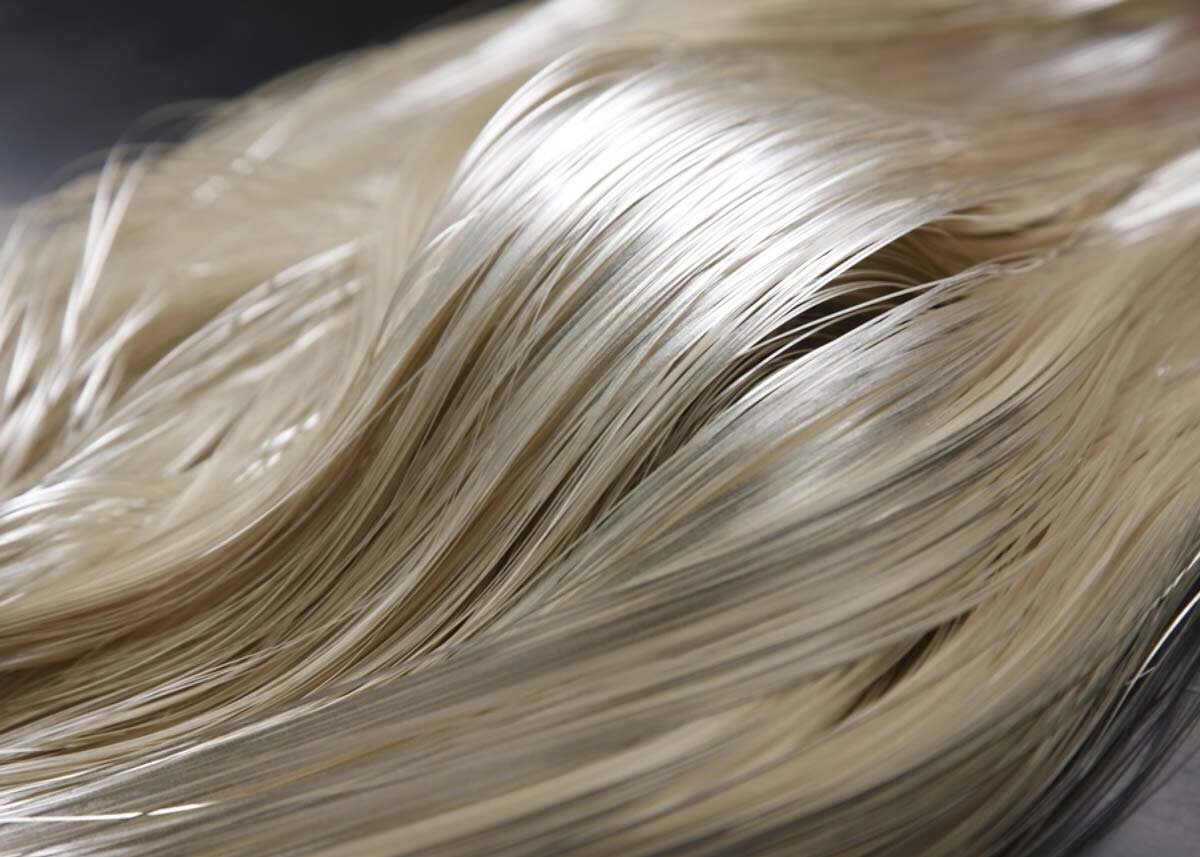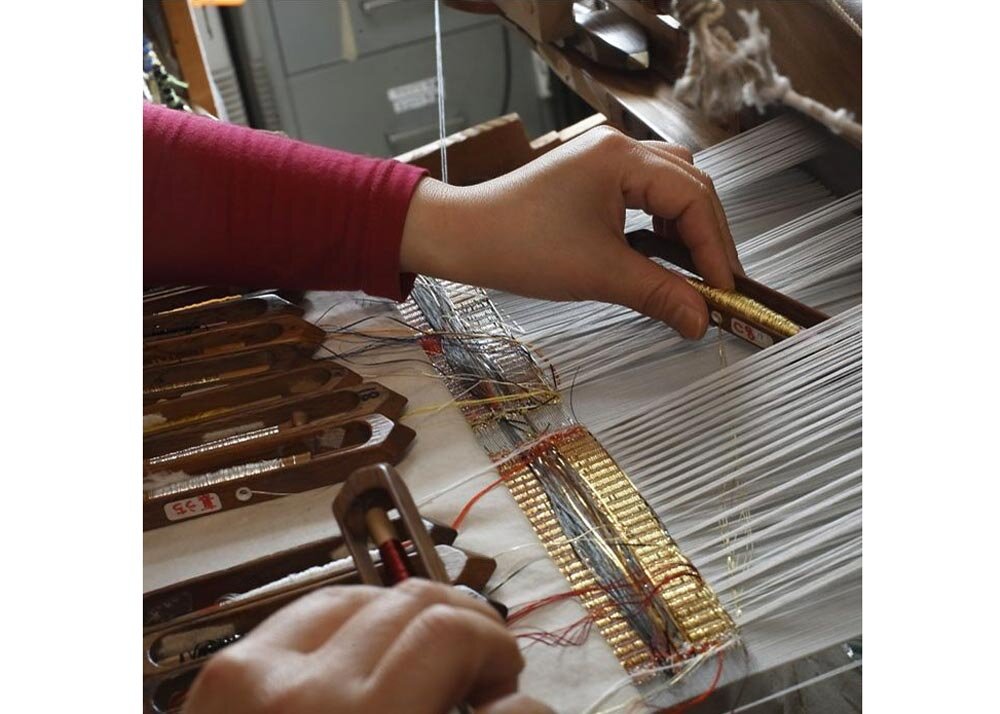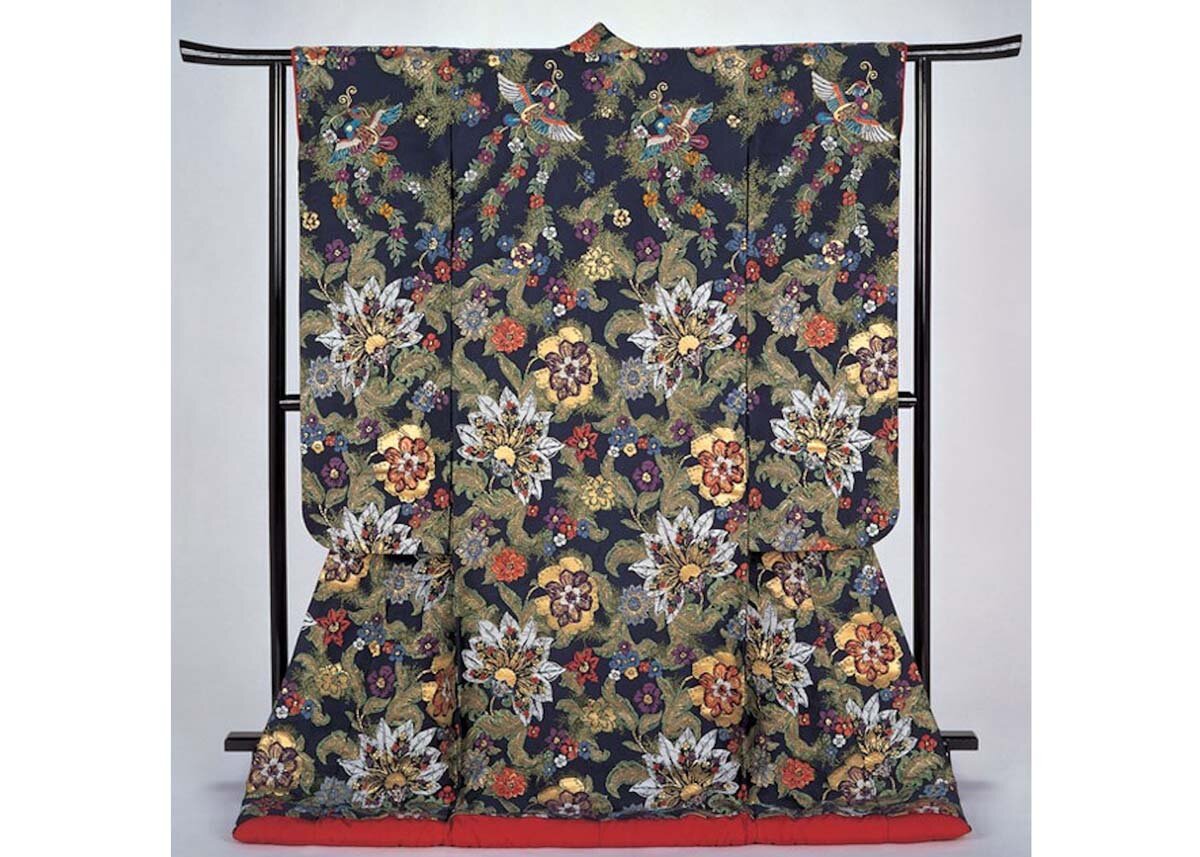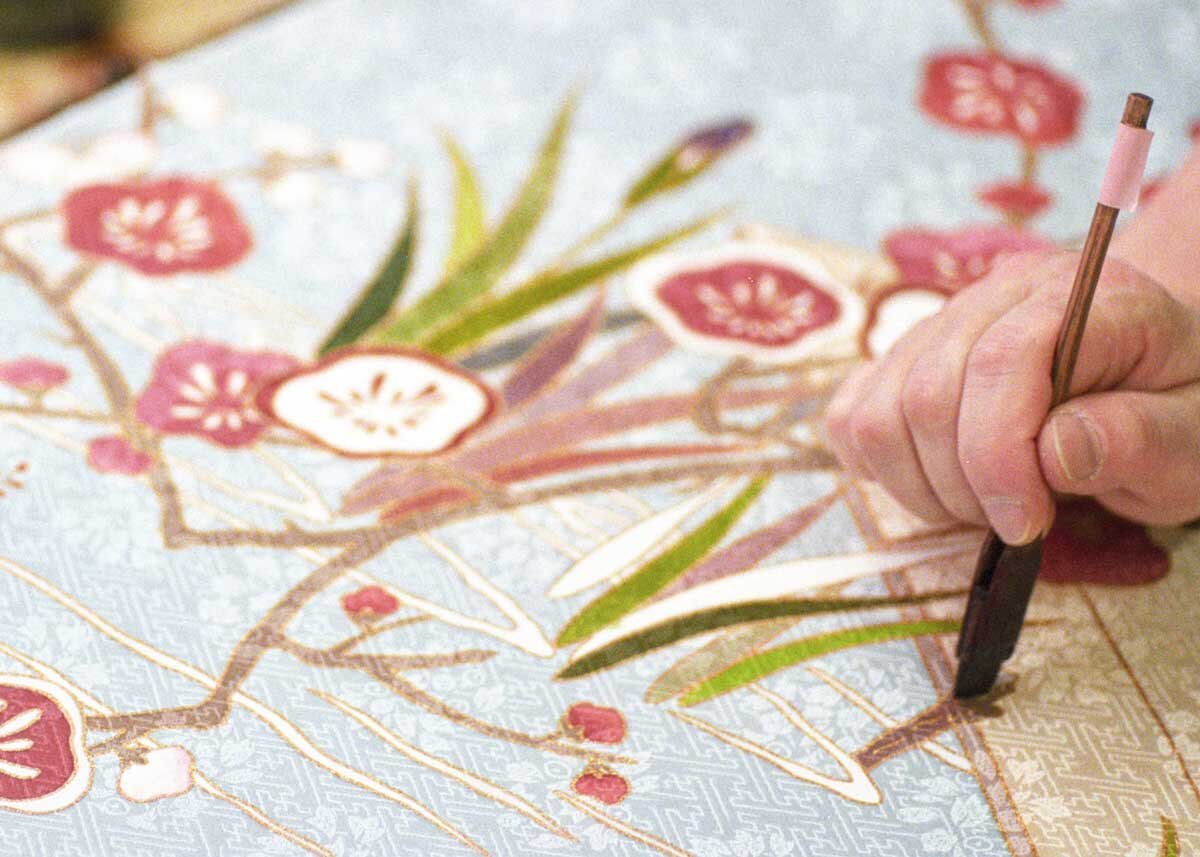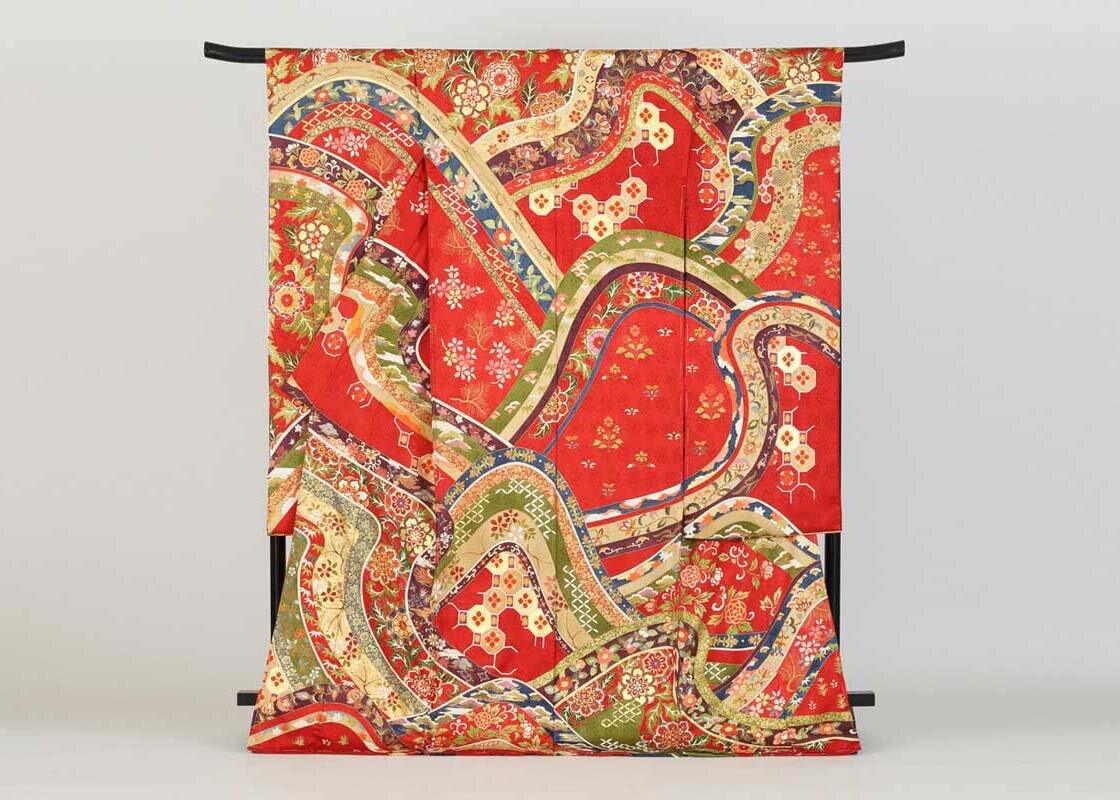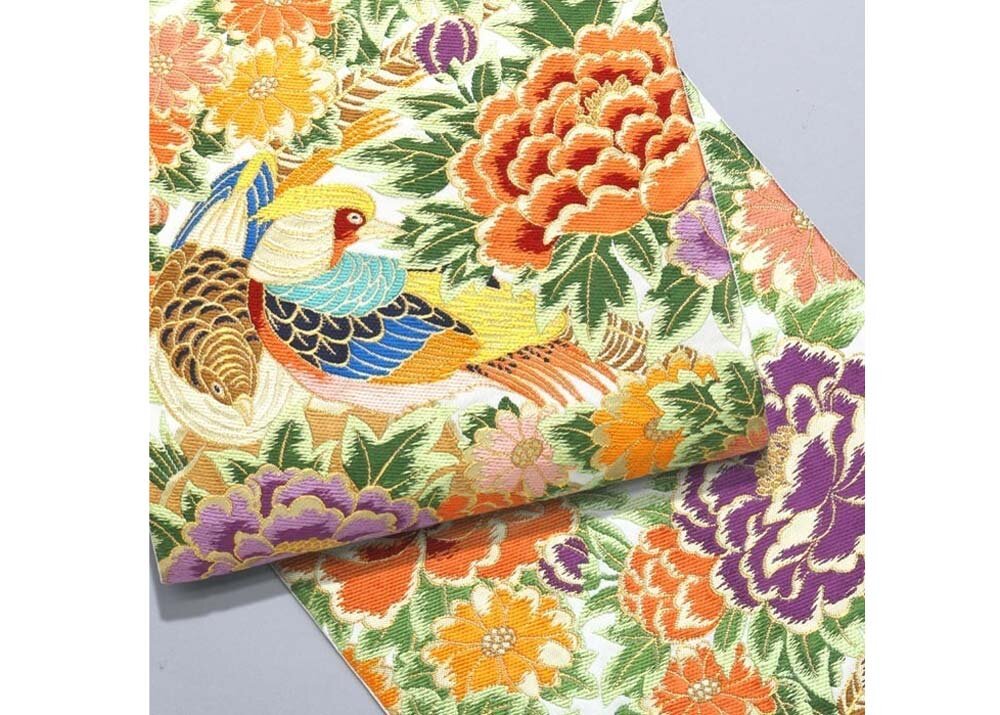Kimono Fabric: All You Need to Know About Japanese Silk
Japanese Silk Kimono by Tomihiro
Silk is tightly woven into the fabric of Japanese art and culture. While silk has been used in Japanese textiles since the 5th century, it has also changed with advances in technology, especially with the advent of the modern age.
When Did Silk Arrive in Japan?
Vintage Japanese Silk Kimono, available at Japan Objects Store
The discovery and spread of silk across the world has been retold in many stories. Legend states that Chinese Empress Leizu (also known as Xi Ling Shi) accidentally discovered silk in 2700 BCE when a cocoon dropped from the Mulberry tree into hot water - she soon found she could unravel the silk thread from the cocoon and had the idea to weave it. Silk first came to Japan via Korea in the 4th Century, but was revolutionized with new weaving processes in Kyoto in the nineteenth century. These woven textiles fashioned in Kyoto’s Nishijin district are known as Nishijin-ori, or Nishijin textiles.
Where Does Japanese Silk Come From?
Mulberry Silk from Tatsumura Textile
There are four types of silk used across the world: Mulberry silk, Eri silk, Tussar silk and Muga silk, with Mulberry being the most commonly used in Japan and elsewhere as it creates the softest fabric. About 90% of the world’s silk comes from the mulberry silkworm.
Silk Weaving by Tatsumura Textile
Eri silk is popular in India, China, Japan, and Thailand and comes from the eri caterpillar. You will generally see Buddhist monks across Asia, including Japan, wearing clothes made from eri silk due to the peaceful process used in obtaining the silk from the caterpillars.
How are Japanese silk products made?
1. Kyoto Silk Brocade (Nishijin Ori)
Nishijin Silk Obi by Tatsumura Textile
This is the highest quality silk product available in Japan. The name Nishijin comes from a district of Kyoto which no longer exists. Go there today and you’ll find the Kamigyo and Kita wards in its place. Nishijin brocade, because of their high quality and deep history, are used to create the best quality kimono fabric and obi, as well as wallets and purses, costumes for noh theatre, and festival decorations.
Silk Nishijin Kimono by Tatsumura Textile
One modern company that has been weaving Nishijin brocade textiles since the Meiji Restoration is Tatsumura Textile. They have produced products for Emperor Hirohito himself and are valued as the great modern weavers of Nishijin Ori.
2. Kyo-Yuzen
Handpainting on Kimono Fabric by Ritofu
Kyo-Yuzen isn’t a technique for weaving silk, but rather one of painting elaborate and colorful patterns onto silk. It’s an art that can be traced back to the Edo period, and is the primary method of dyeing kimono to produce finished products of deep and vivid color.
Kyo-Yuzen Silk Kimono by Ritofu
What makes yuzen distinct from other cloth dyeing techniques is the fact that it is done by hand. Yuzen artists - the first of which was Miyazaki Yuzen Sai, after whom the technique was named - hand-paint delicate and elaborate images onto silk kimono fabric, permanently dying the silk with each brush stroke. It is a delicate procedure but one that produces some of the most elaborately stunning kimono in Japan.
3. Chirimen Silk
Making Chirimen Silk
Another prominent technique in Japanese silk production is chirimen, a Japanese textile made of flat woven silk (also often known as silk-crepe). It’s primarily used for kimono and home textiles as it’s a particularly durable fabric and such high-quality silk that it can be dyed several times. It is created by weaving raw silk with raw silk wefts that have been twisted around 3,000-4,000 times per meter. The yarn is then compressed and untwisted bringing out the signature bumpy texture, known as shibo. One of the most famous areas for chirimen production is the Tango region of Kyoto.
The finest Kimono Fabric Silk Objects
Silk Obi Belt by Tatsumura Textile
Japanese silk textiles are used to weave a variety of elaborate objects, from noh theatre costumes to festival decorations, but the most iconic and elegant silk objects are, without question, the kimono and its accompanying obi sash.
(By Jessica Esa)



